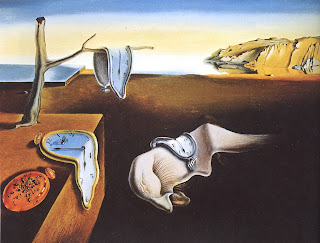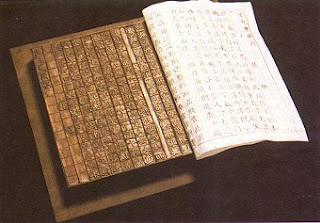Week Two | Math + Art
Linda Henderson gave a holistic view of how the fourth dimension and non-Euclidean Geometry connected to Surrealism and further development in modern art. I learnt about the fourth dimension on math classes, but never thought it could be applied to art. It is surprising to me how artists understood the serious math (or physics) concept, expressed it using art form, and brought about strong repercussions in society.
The novel Flatland: A Romance of Many Dimensions demonstrates how difficult it is for people living in one dimension to understand other dimensions, and how different perspectives create differences. It is truly hard for me to imagine a world in higher dimensions. Therefore, from some aspects, these artists changed the former layout and created new patterns of the world, leading people to thinking about consciousness.
Dali is a typical representative of Surrealism. In his works, he showed how time and space got connected together, by repetitively using similar image, like the melting clocks in The Persistence of Memory.
One thing in Dali’s works that really attracts me is his desire to master the power of gravity. This is also why his works seem surreal and metaphysical.
I also love how he applied surrealism to his daily life. He praised illusions highly, and when we see his characteristic flamboyant moustache, we think of his works and surrealism immediately.
I used to think math and science can only be applied to art in “physical” ways, such as the application of Gold ratio in Mona Lisa and the Pantheon. However, after I dug deep into them, I found that there are definitely many other connections between art, math and science. These connections arouse public attention to our consciousness and how the physical world and our inner world look like.
Works Cited:
Abbott, Edwin A. Flatland: A Romance of Many Dimensions. Seeley & Co. of London, 1884.
Dali, Salvador. The Persistence of Memory. 1931, oil on canvas, Museum of Modern Art, New York City.
Dali, Salvador. Soft Watch at the Moment of First Explosion. 1954, ink on paper, Salvador Dali Museum, St. Petersberg.
Henderson, Linda D. "The Fourth Dimension and Non-Euclidean Geometry in Modern Art: Conclusion." Leonardo, Vol. 17, No. 3. (1984), pp. 205-210.
TIME Photo. "The Photo That Changed Modern Portraiture." Time.
The novel Flatland: A Romance of Many Dimensions demonstrates how difficult it is for people living in one dimension to understand other dimensions, and how different perspectives create differences. It is truly hard for me to imagine a world in higher dimensions. Therefore, from some aspects, these artists changed the former layout and created new patterns of the world, leading people to thinking about consciousness.
Dali is a typical representative of Surrealism. In his works, he showed how time and space got connected together, by repetitively using similar image, like the melting clocks in The Persistence of Memory.
 |
| The Persistence of Memory |
 |
| Soft Watch at the Moment of First Explosion |
One thing in Dali’s works that really attracts me is his desire to master the power of gravity. This is also why his works seem surreal and metaphysical.
 |
| Dali's characteristic moustache |
I used to think math and science can only be applied to art in “physical” ways, such as the application of Gold ratio in Mona Lisa and the Pantheon. However, after I dug deep into them, I found that there are definitely many other connections between art, math and science. These connections arouse public attention to our consciousness and how the physical world and our inner world look like.
Abbott, Edwin A. Flatland: A Romance of Many Dimensions. Seeley & Co. of London, 1884.
Dali, Salvador. The Persistence of Memory. 1931, oil on canvas, Museum of Modern Art, New York City.
Dali, Salvador. Soft Watch at the Moment of First Explosion. 1954, ink on paper, Salvador Dali Museum, St. Petersberg.
Henderson, Linda D. "The Fourth Dimension and Non-Euclidean Geometry in Modern Art: Conclusion." Leonardo, Vol. 17, No. 3. (1984), pp. 205-210.
TIME Photo. "The Photo That Changed Modern Portraiture." Time.



Comments
Post a Comment